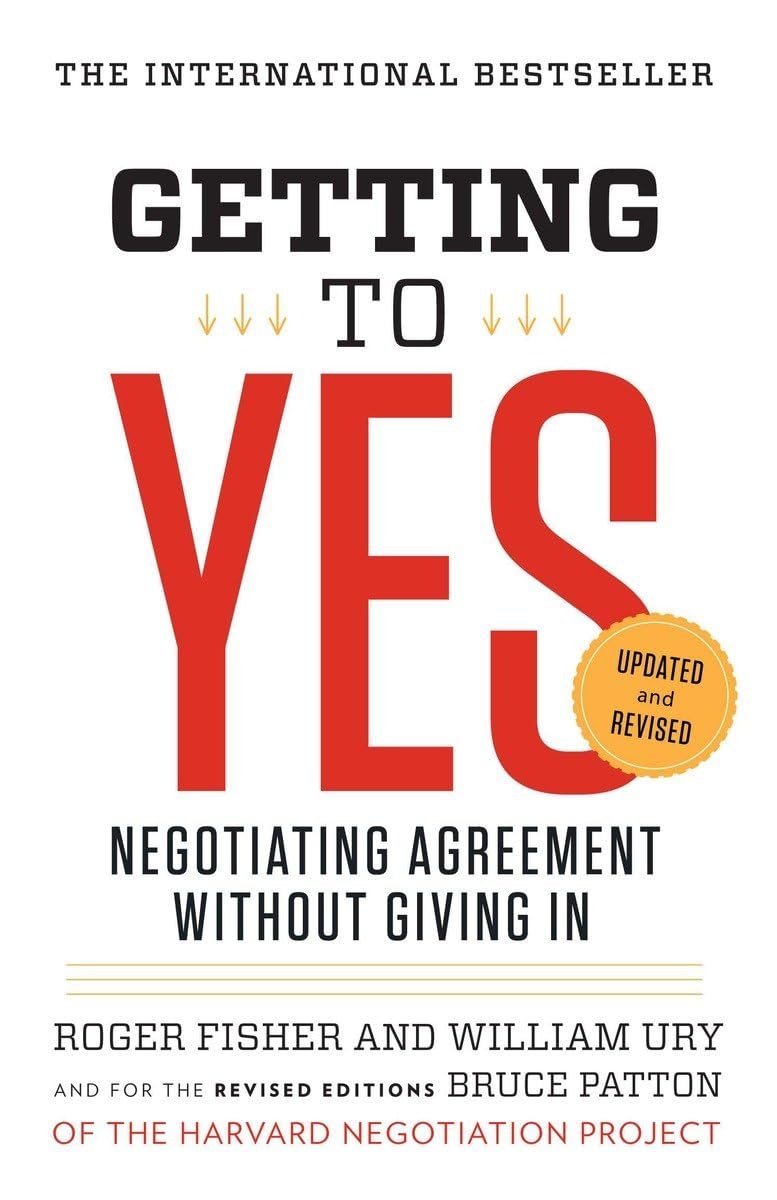“Getting to Yes” – The Art of Saying Yes (Without Giving In)
The Workplace Problem: Stalemates, Power Struggles, and Unresolved Conflicts
HR professionals and leaders often find themselves in the middle of workplace disputes—between employees, teams, and even senior executives. Too often, these conflicts turn into win-lose battles, where one side dominates, and the other walks away frustrated. Compromise can feel like a loss, and tensions resurface later.
How do you negotiate workplace conflicts without one side feeling like they’ve lost?
What This Book is About
Getting to Yes introduces the principled negotiation approach developed at Harvard’s Program on Negotiation. Instead of digging into fixed positions, this method focuses on finding solutions that benefit both parties and create lasting agreements. It’s a practical, research-backed framework for navigating high-stakes discussions—without unnecessary concessions.
Key Takeaways for HR and Workplace Leaders
Separate People from the Problem – Conflicts often get personal. Keep discussions focused on facts and issues, not personalities.
Focus on Interests, Not Positions – Instead of debating over “what” each side wants, uncover why they want it.
Create Options for Mutual Gain – Encourage flexible thinking and brainstorming rather than rigid, either-or solutions.
Use Objective Criteria – Rely on policies, benchmarks, and industry standards to support fair decision-making.
Workplace Tools and Models from the Book
BATNA (Best Alternative to a Negotiated Agreement) – Know your fallback plan before entering a negotiation. This ensures you never feel forced into a bad deal.
The “Yes, And” Approach – Instead of rejecting a demand outright, find areas of agreement and build on them.
Negotiation Without Concessions – The best outcomes aren’t about giving in but finding solutions that work for everyone.
Why This Matters for HR and Workplace Leaders
HR professionals are often responsible for mediating disputes, handling negotiations, and managing difficult conversations. The strategies in Getting to Yes can be applied to:
Employee conflict resolution
Policy negotiations
Leadership-team discussions
Union and executive negotiations
How This Connects to Workplace Assessments and Restorations
One of the biggest insights from workplace assessments is that employees often don’t feel heard. A structured negotiation framework helps organizations move beyond surface-level disputes and address the root issues.
By applying these strategies, teams can reduce workplace conflict, improve decision-making, and create a culture of trust.
How Can You Apply This?
➡️ Are workplace conflicts causing division in your organization?
➡️ Do employees feel unheard in disputes?
Let’s discuss how workplace assessments and structured mediation can help your team move forward constructively.
📩 Book a consultation today.
Where to Buy
Interested in reading Getting to Yes? You can purchase it here:
📚 Amazon
📚 Penguin Random House

